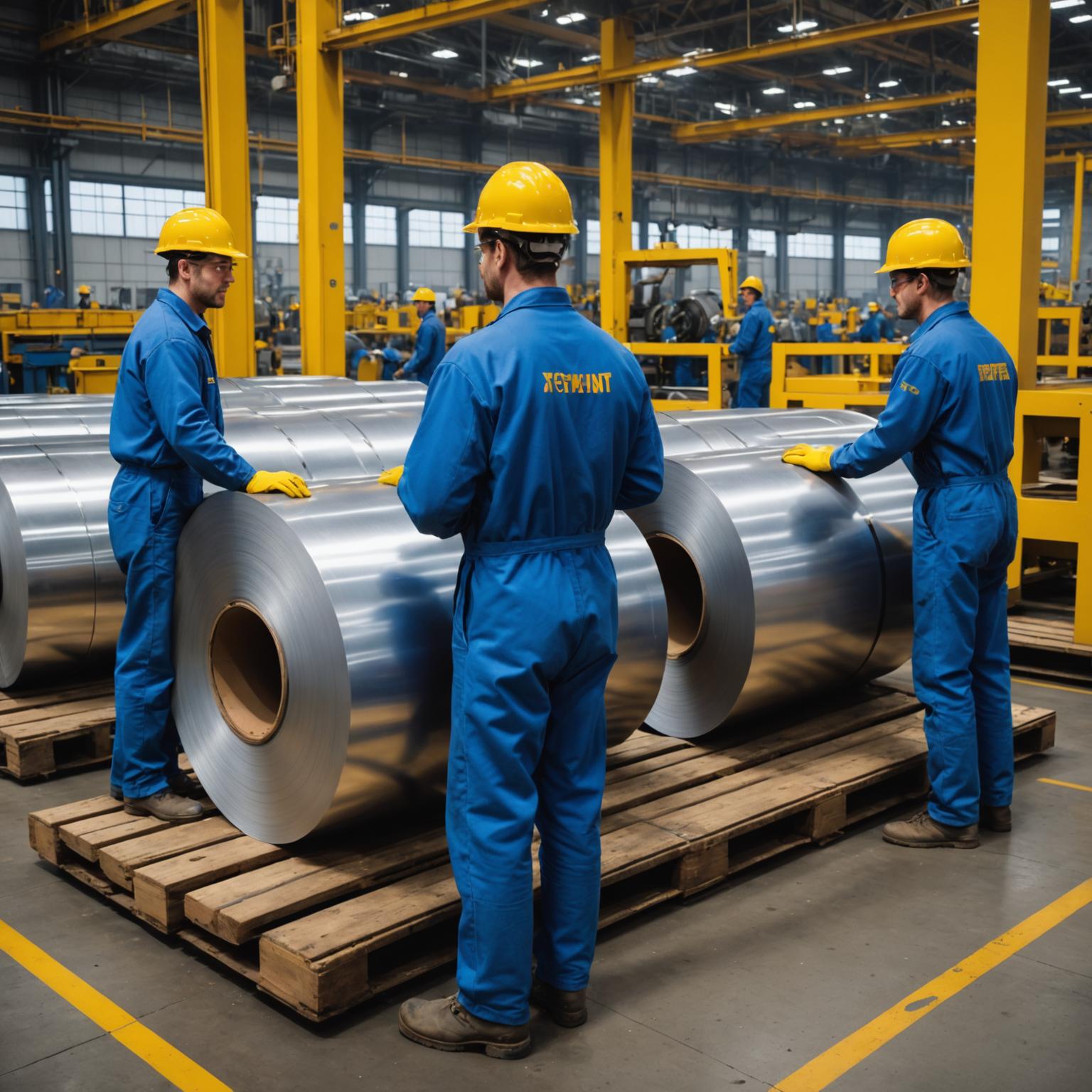Effective warehouse management is the backbone of any successful industrial operation, ensuring that materials are stored safely, inventoried accurately, and retrieved efficiently. However, not all materials are created equal, and understanding the specific Warehouse management requirements for different products is crucial to maintaining quality and preventing loss. This is especially true for high-value, precision-engineered items like a stainless steel coil. These products, known for their durability and polished finish, demand a specialized approach to handling and storage to protect their integrity from the moment they arrive until they are dispatched for manufacturing or construction.
Step 1: Proper Receiving and Inspection Protocols
Upon the arrival of a new shipment, the first critical step is a thorough receiving and inspection process. This is more than just counting units; it's the first line of defense in quality control. Each coil should be carefully examined for any signs of damage that may have occurred during transit. Look for dents, scratches, or any imperfections on the polished surface that could compromise its aesthetic or structural qualities. It is also vital to verify that the shipment matches the purchase order specifications exactly. This includes checking the coil's weight, dimensions, and uniform thickness to ensure it meets the exacting standards required for its end-use. Meticulous documentation during this phase, including photographic evidence of any issues, creates a clear record and is a cornerstone of professional inventory control. Establishing a dedicated, well-lit inspection area allows your team to perform these checks accurately and safely before the product is moved into primary storage.
Step 2: Safe and Efficient Handling Procedures
Handling a stainless steel coil requires both specialized equipment and highly trained personnel. Due to their significant weight and cylindrical shape, improper movement poses a risk to both the product and your staff. The use of appropriate material handling equipment is non-negotiable. This can include C-hooks, coil lifters, or forklifts equipped with a specialized coil ram. These tools are designed to support the coil's structure and prevent damage. It is critical to avoid using standard forklift tines or chains directly on the coil's surface, as this can easily cause dents and scratches, rendering the material useless for applications where a flawless finish is required. Staff should be thoroughly trained on the specific procedures for lifting, transporting, and placing each coil, emphasizing smooth, controlled movements. A commitment to safety, reflected in proper gear and a well-maintained facility, ensures that these valuable assets are moved without incident.
Step 3: Creating the Ideal Storage Environment
The environment in which a stainless steel coil is stored plays a massive role in preserving its quality over time. While stainless steel is known for its corrosion resistance, it is not entirely immune to environmental factors, especially over long periods. The ideal storage location is a clean, dry, indoor facility with a stable climate. Controlling humidity is particularly important to prevent any potential for surface condensation or water spots that could mar the finish. The storage area should be free from airborne contaminants, such as chemical fumes or abrasive dust, that could react with or scratch the steel. A spacious, brightly-lit production facility not only improves safety and morale but also makes it easier to spot potential hazards and maintain cleanliness, further protecting your inventory. Keeping coils off the floor is another essential practice to safeguard them from ground moisture and dirt.
Step 4: Implementing Effective Stacking and Racking
Proper storage configuration is essential for safety, space optimization, and product preservation. Simply placing coils on the floor is inefficient and dangerous. The best practice is to use specialized storage systems, such as dedicated coil racks or cradles. These systems are engineered to securely hold the coils, preventing them from rolling and providing stable, organized storage. Storing coils on sturdy racks ensures they remain off the ground, protects their shape, and makes them easily accessible for retrieval. If racking is not feasible, coils can be stacked in a pyramid formation, but only with appropriate dunnage—such as wooden blocks or rubber pads—placed between each layer and between the bottom coil and the floor. This dunnage distributes weight evenly and prevents metal-on-metal contact that could lead to scratching. An organized racking system is a hallmark of strong Warehouse management requirements, transforming your storage space into a highly efficient and safe environment.
Step 5: Advanced Inventory Management and Tracking
Finally, a robust inventory management system is needed to tie all these physical processes together. Knowing exactly what you have, where it is, and its condition is fundamental. Each coil should be tagged with a unique identifier that links to detailed information in your system, including its specifications, arrival date, and inspection notes. Implementing a First-In, First-Out (FIFO) system is highly recommended. This ensures that older stock is used before newer stock, minimizing the time any single coil spends in storage and reducing the risk of long-term degradation. A modern Warehouse Management System (WMS) can automate tracking, streamline the picking process, and provide real-time data for better purchasing and production planning. Precise tracking fulfills key Warehouse management requirements, protecting your investment and ensuring that the high-quality materials you store are the same high-quality materials you deliver to your clients or production line.








